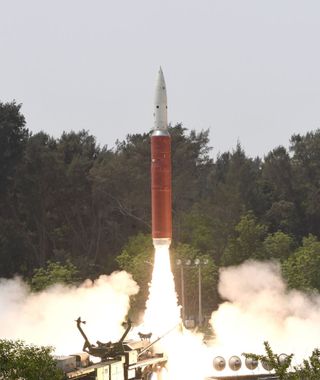By
Bridenstine had harsh words to say about India’s test today in a NASA town hall meeting, saying that causing this type of risk to humans in space, and low Earth orbit operations, was unacceptable.
“That is a terrible, terrible thing, to create an event that sends debris in an apogee that goes above the International Space Station,” Bridenstine said at the town hall meeting, which was livestreamed on NASA TV. “And that kind of activity is not compatible with the future of human spaceflight that we need to see happen.”
“We are charged with commercializing low Earth orbit; we are charged with enabling more activities in space than we’ve ever seen before for the purpose of benefiting the human condition, whether it’s pharmaceuticals or printing human organs in 3D to save lives here on Earth, or manufacturing capabilities in space that you’re not able to do in a gravity well,” he added. “All of those are placed at risk when these kind of events happen — and when one country does it, then other countries feel like they have to do it as well.”
Bridenstine said that NASA has identified 400 pieces of orbital debris from the event, including the 60 greater than 10 centimeters in diameter that the agency can track and 24 that travel through the space station’s orbital height. As of last week, the agency, along with the Combined Space Operations Center (part of U.S. Strategic Command), had estimated that the risk to the International Space Station of small-debris impact had risen by 44 percent over a period of 10 days.
(Bridenstine added later that despite this increased risk, the astronauts are still safe, and that the International Space Station will be maneuvered if needed to avoid the debris — though it’s unlikely that will be necessary.)
“The good thing is, it’s low enough in Earth orbit that over time this will all dissipate,” Bridenstine said — whereas much of the debris from a 2007 Chinese anti-satellite test is still in orbit.

India’s Press Information Bureau India tweeted this image of Wednesday’s (March 27) “Mission Shakti,” the country’s first test-fire launch of an anti-satellite weapon.
Bridenstine talked about the United States’ management of a database for situational awareness in space and space-traffic management that’s usable for everyone in the world. Some of that responsibility will soon be transferred to the Commerce Department under the Trump administration’s Space Policy Directive-3, but it will remain critical to track debris, including what’s been created by India’s test.
“But at the end of the day we need to be clear, with everybody in the world, we’re the only agency in the federal government that has human lives at stake here,” Bridenstine said. “And it is not acceptable for us to allow people to create orbital debris fields that put at risk our people.”
“We need to be clear, also, that these activities are not sustainable or compatible with human spaceflight,” he added.
Last week at a U.S. House hearing, Bridenstine also discussed debris-creating operations, although he didn’t refer specifically to India’s test.
“Debris ends up being there for a long time; if we wreck space, we’re not getting it back,” he said at the time. “And it’s also important to note that creating debris fields intentionally is wrong … the entire world [has to] step up and say, if you’re going to do this, you’re going to pay a consequence — and right now that consequence is not being paid.”
